EDIT: I forgot to add, this is for the NODE JS Server side, some answers has the Jquery cloning (does jquery cloning works on the server side, I tried it is throwing error as ReferenceError: jQuery is not defined). So, I request every one, please add solution which can work on the Node JS
First check these program and their output:
var a = {};
a.name = "Jessie";
a.age = 22;
var tarray = [];
tarray.push(a);
console.dir('------------------before-------------------------------------');
console.dir(tarray);
a.name = "Monica";
a.age = 18;
console.dir('------------------After-------------------------------------');
console.dir(tarray);
Output:
'------------------before-------------------------------------'
[ { name: 'Jessie', age: 22 } ]
'------------------After-------------------------------------'
[ { name: 'Monica', age: 18 } ]
Same program in a different way,
var a = [{"name" : "Jessie", "Age" : 22}];
var tarray = [];
tarray.push(a[0]);
console.dir('------------------before-------------------------------------');
console.dir(a);
console.dir(tarray);
a[0].name = "Monica";
a[0].Age = 18;
console.dir('------------------After-------------------------------------');
console.dir(a);
console.dir(tarray);
Output
'------------------before-------------------------------------'
[ { name: 'Jessie', Age: 22 } ]
[ { name: 'Jessie', Age: 22 } ]
'------------------After-------------------------------------'
[ { name: 'Monica', Age: 18 } ]
[ { name: 'Monica', Age: 18 } ]
From these programs i can figure it out that, JS objects are pushed into array as reference. So that, if the object changes, the value in the object which is pushed into the array also changes.
How to change this behavior in the javascript. I mean, if the object value changes then, the object pushed into the array should not have to change.
Yes, thanks to all, cloning using the Object.assign and JSON.parse can solve the problem:
var a = {};
a.name = "Jessie";
a.age = 22;
var clone = Object.assign({}, a);
var tarray = [];
tarray.push(clone);
console.dir('------------------before-------------------------------------');
console.dir(tarray);
a.name = "Monica";
a.age = 18;
var clone = Object.assign({}, a);
tarray.push(clone);
console.dir('------------------After-------------------------------------');
console.dir(tarray);
a.name = "Rose";
a.age = 16;
var j = (JSON.parse(JSON.stringify(a)));
tarray.push(j);
console.dir('------------------After JSON Parse Cloning-------------------------------------');
console.dir(tarray);
Output:
'------------------before-------------------------------------'
[ { name: 'Jessie', age: 22 } ]
'------------------After-------------------------------------'
[ { name: 'Jessie', age: 22 }, { name: 'Monica', age: 18 } ]
'------------------After JSON Parse Cloning-------------------------------------'
[ { name: 'Jessie', age: 22 },
{ name: 'Monica', age: 18 },
{ name: 'Rose', age: 16 } ]
But what is the deep / shallow copying in the JavaScript? Is their any concept like that in JS?
